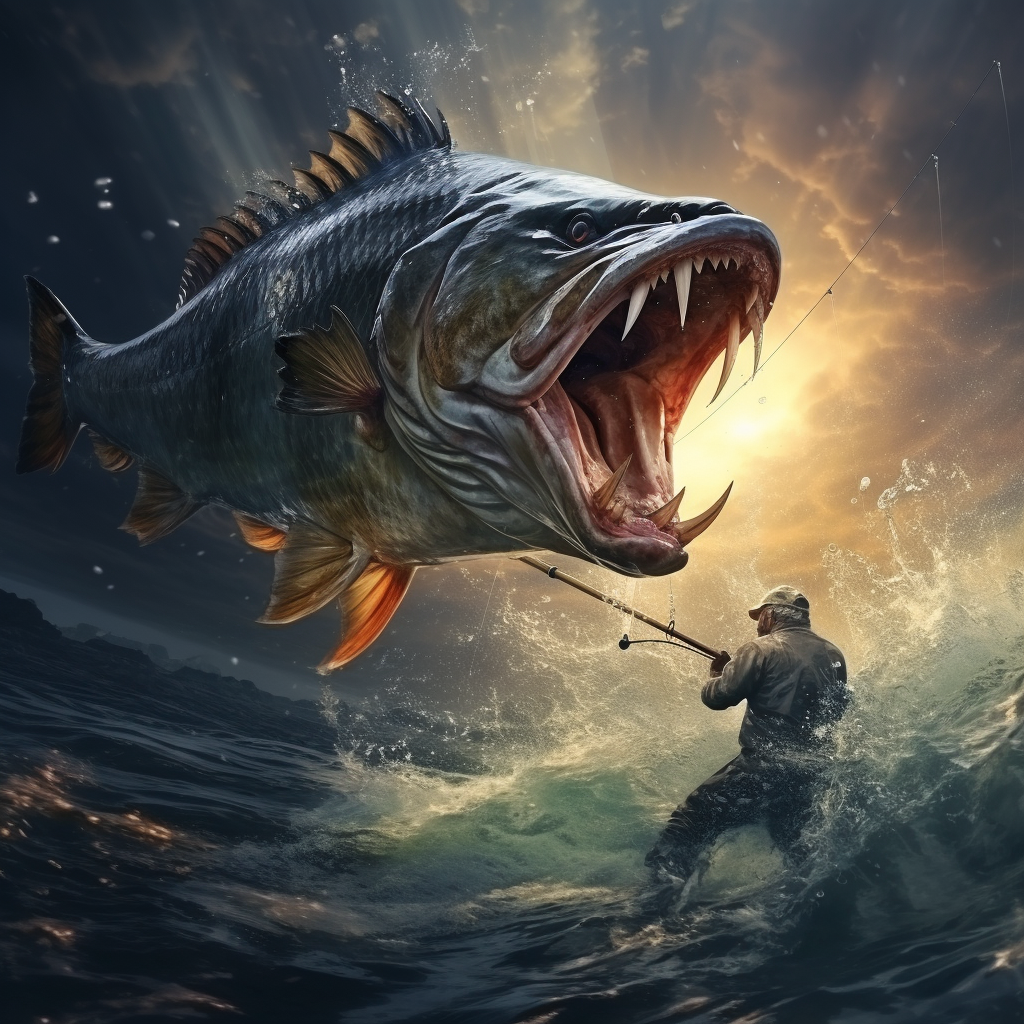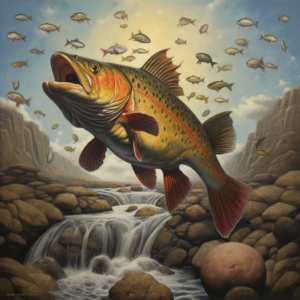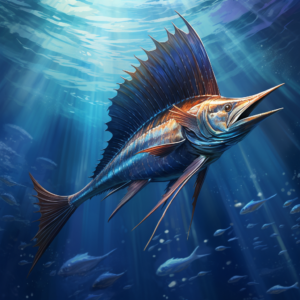Welcome to the exciting world of sailfish fishing! If you’re looking for a challenge and enjoy the rush of adrenaline, then fishing for sailfish is perfect for you. These majestic creatures are the fastest fish in the sea, and catching one requires skill, patience, and the right equipment.
In this section, we’ll take you through the techniques and tips you need to successfully catch sailfish. We’ll explore the best fishing spots, gear and equipment, bait, and effective fishing techniques. So, let’s dive in and learn how to catch one of the most thrilling fish out there.
Whether you’re an experienced angler or a beginner, this guide will provide you with everything you need to know to catch sailfish. So, grab your fishing gear and let’s get started!
Understanding Sailfish Behavior and Habitat
When it comes to sailfish fishing, understanding their behavior patterns and preferred habitat can greatly increase your chances of a successful catch. Sailfish are known to frequent warm waters, making them particularly prevalent in spots along the Florida Keys, Gulf of Mexico, and other tropical locales. They are often found in waters with a depth of 100-200 feet, but can also be found in shallower waters.
Sailfish are known for their unique and recognizable physical features. They have a distinctive sail-like dorsal fin and vibrant blue and silver colors. Sailfish are also one of the fastest fish in the sea, capable of reaching speeds of up to 68 miles per hour.
To catch sailfish, it’s important to know their feeding habits. Sailfish are opportunistic predators that commonly feed on schools of small fish, such as sardines and ballyhoo. They are also known to feed on squid and other cephalopods.
“Sailfish are often found in waters with a depth of 100-200 feet, but can also be found in shallower waters.”
When searching for sailfish, look for areas with structure such as weedlines, color changes, and current edges. These spots tend to attract small fish, which, in turn, attract sailfish. Additionally, sailfish are known to migrate during certain times of the year, so it’s important to research their migration patterns before planning your fishing trip.
Preferred Habitat of Sailfish
While sailfish are known to inhabit waters around the world, they are most commonly found in the Atlantic Ocean and the Gulf of Mexico. Sailfish tend to prefer warm waters with a temperature range between 70-82°F. They are often found near structures such as reefs, ledges, and drop-offs.
When it comes to finding sailfish, it’s important to be patient and persistent. Sailfish are known to be skittish and can quickly spook if they detect any movement or disturbance in the water. It’s important to remain quiet and still while fishing for sailfish to avoid scaring them off.
By understanding the behavior patterns and preferred habitat of sailfish, you can increase your chances of a successful catch. Remember to do your research and remain patient while searching for these incredible fish.
Essential Fishing Gear and Equipment for Sailfish Fishing
If you want to catch sailfish successfully, you need to make sure you have the right fishing gear and equipment. Here are some essential items you should consider:
Fishing Reels: You will need a reel with a high line capacity, a strong drag system, and a fast retrieval rate to handle the speed and strength of the sailfish. Baitcasting reels and spinning reels are both suitable choices.
Fishing Rods: Look for a rod that is sturdy and can handle the weight of the sailfish. Fiberglass or composite rods are ideal as they are both durable and flexible enough to handle the fight of the fish. A rod with a length of 6 to 7 feet is recommended.
Fishing Line: Your fishing line should be strong and durable, with a breaking strength of at least 30 pounds. Monofilament or braided lines are both suitable options.
Terminal Tackle: You will need leaders, hooks, and swivels to complete your rig. Leaders of at least 6 feet in length made of fluorocarbon or wire are best, with circle hooks being the recommended option to improve catch and release success rates. Swivels should be strong enough to handle the weight of the fish and to reduce line twist.
Bait and Lures: Sailfish responds best to live bait such as ballyhoo, goggle eyes, and blue runners. Artificial lures such as poppers and swimbaits can also be effective at attracting the fish.
Fishing Accessories: Don’t forget to bring polarized sunglasses to help you spot sailfish near the surface. Sunscreen, hats, and protective clothing are also important for your comfort and safety while fishing.
By having the right gear and equipment, you increase your chances of a successful sailfish catch. Remember to always check your gear before heading out and replace any worn or damaged equipment. Good luck!
Effective Sailfish Fishing Techniques and Tips
Catching a sailfish can be a thrilling experience for any angler. However, these fast and powerful fish can also be quite elusive and difficult to hook. To increase your chances of success, here are some effective sailfish fishing techniques and tips:
1. Use the Right Bait
Sailfish are known to be attracted to live bait such as ballyhoo, herring, and squid. Make sure your bait is lively and fresh, and rig it in a way that makes it appear natural in the water. You can also use artificial lures such as daisy chains, skirted lures, or poppers to entice sailfish.
2. Troll at the Right Speed
Sailfish are fast swimmers and prefer to chase down their prey. Trolling your bait at a speed of 7-9 knots is ideal for attracting sailfish. Make sure your bait is at the right depth for the type of sailfish you are targeting.
“Sailfish are attracted to fast-moving bait that appears natural in the water.”
3. Set the Hook Properly
When you feel a sailfish bite, resist the urge to immediately set the hook. Wait until you feel the weight of the fish on the line before setting the hook with a firm but controlled motion. Setting the hook too early or too hard can cause the hook to pull out of the fish’s mouth.
4. Use the Right Gear
Having the right gear can make all the difference when it comes to catching sailfish. Use a sturdy fishing rod with a fast action tip and a reel with a high gear ratio to quickly reel in your catch. Make sure your line is strong enough to handle the weight and fighting power of sailfish.
5. Keep the Fish in the Water
Sailfish are delicate creatures and can easily become stressed when taken out of the water. Keep the fish in the water as much as possible during the catch, and handle them gently to avoid causing injury. If you need to take a photo, make sure you do so quickly and return the fish to the water immediately after.
By following these effective sailfish fishing techniques and tips, you can increase your chances of successfully catching these magnificent fish. Remember to always practice responsible fishing and respect the environment in which these fish live.
Advanced Strategies for Landing Sailfish
Catching a sailfish is an impressive accomplishment, but landing one takes a bit more finesse. Here are some advanced techniques to help you successfully bring in your catch:
“One of the most important things to keep in mind when fighting a sailfish is to always be aware of your fishing line. Make sure it is not tangled or wrapped around the boat’s propeller.”
Line management is crucial to landing a sailfish. Keep a close eye on your line and be ready to adjust your drag accordingly. When the fish takes off, let it run and tire itself out before reeling it in.
When reeling in a sailfish, avoid using the rod’s chair for support. Instead, stand and use your legs to help you reel and fight the fish. This allows for more mobility and control.
Another tip is to use the boat’s movements to your advantage. When the sailfish is pulling against you, move the boat in the direction the fish is swimming. This can help tire out the fish and make it easier to reel in.
“When handling a sailfish, be mindful of its sharp bill and the potential for injury. Use a pair of gloves and be gentle when removing the hook and releasing it back into the water.”
Finally, always prioritize the safety and well-being of the sailfish. Use proper gear and techniques to avoid causing harm and follow catch-and-release guidelines if necessary.
With these advanced strategies, you’ll be well on your way to becoming a skilled sailfish angler. Remember to always approach the sport with respect for the fish and the environment, and happy fishing!
Conclusion
Congratulations! You are now equipped with the knowledge and skills to embark on your own sailfish fishing adventure. Remember to always prioritize safety and responsible fishing practices to help preserve the natural habitats of these magnificent creatures.
As you venture out to the open sea, keep in mind the key factors that contribute to a successful sailfish catch. Patience, persistence, and a love for the sport will undoubtedly lead you to a thrilling and fulfilling experience.
Don’t forget to share your exciting fishing stories and photos with other fishing enthusiasts. Who knows, you may just inspire someone to take up the sport themselves!
We hope this guide has been helpful in your pursuit of catching the fastest fish in the sea. Happy fishing and tight lines!
FAQ
Q: What is sailfish fishing?
A: Sailfish fishing is a type of sport fishing that specifically targets sailfish, which are known for their speed and agility in the water. It involves using various techniques and equipment to catch these elusive fish.
Q: Where can I find sailfish?
A: Sailfish can be found in warm ocean waters around the world. Some popular fishing spots for sailfish include the Pacific coast of Mexico, the Atlantic coast of Florida, and the waters off the coast of Costa Rica.
Q: What gear do I need for sailfish fishing?
A: To successfully fish for sailfish, you will need a sturdy fishing rod and reel, preferably one designed for offshore fishing. You will also need a variety of fishing tackle, such as bait, lures, and leaders, to attract and hook the sailfish.
Q: What are some effective techniques for sailfish fishing?
A: Some effective techniques for sailfish fishing include trolling with live bait or lures, using kites to suspend baitfish at the water’s surface, and casting to feeding sailfish. It’s important to be patient and observant to increase your chances of success.
Q: How do I land a sailfish after hooking it?
A: Landing a sailfish requires skill and patience. Once hooked, the sailfish will likely put up a fight, leaping out of the water and making powerful runs. It’s important to maintain tension on the line and follow the fish’s movements to tire it out before bringing it alongside the boat for release.
Q: What should I do if I catch a sailfish?
A: If you catch a sailfish, it’s important to handle it with care to ensure its survival after release. Use a pair of gloves or a wet towel to handle the fish, avoiding touching its sensitive skin. Keep the fish in the water as much as possible and release it gently, making sure it has regained its strength before swimming away.




